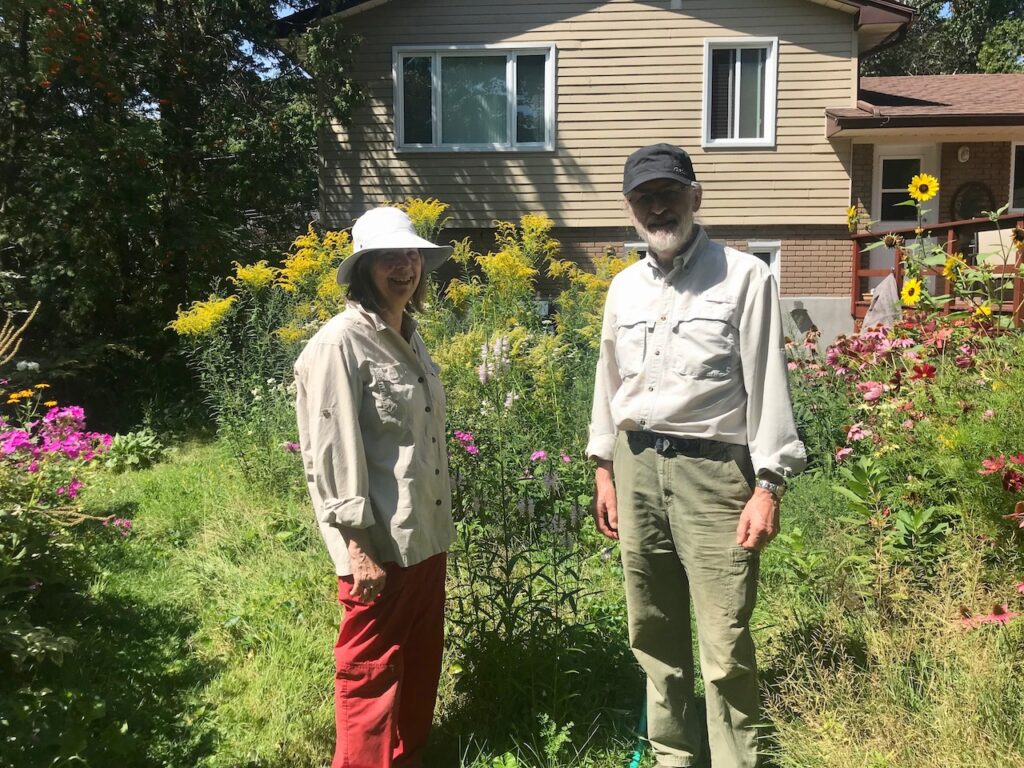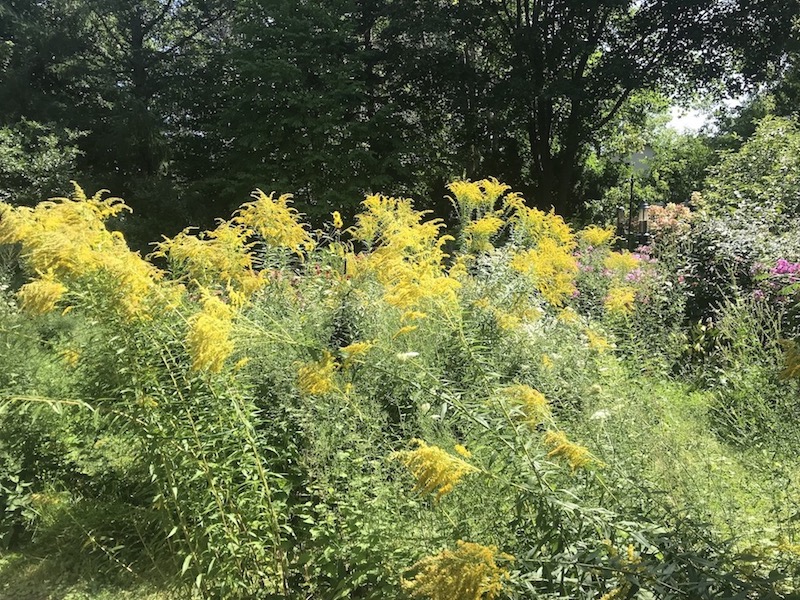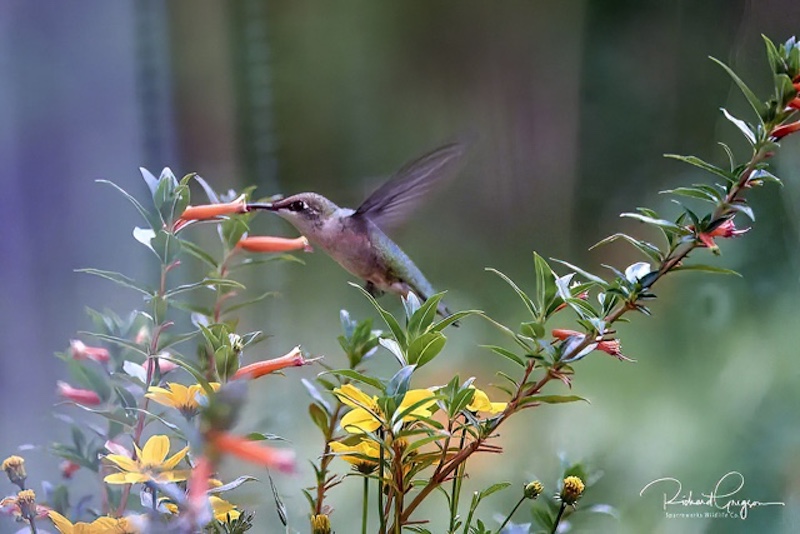A Baie d’Urfé couple has created a lush landscape that attracts a broad spectrum of wildlife — from birds and butterflies to bunnies and bees.
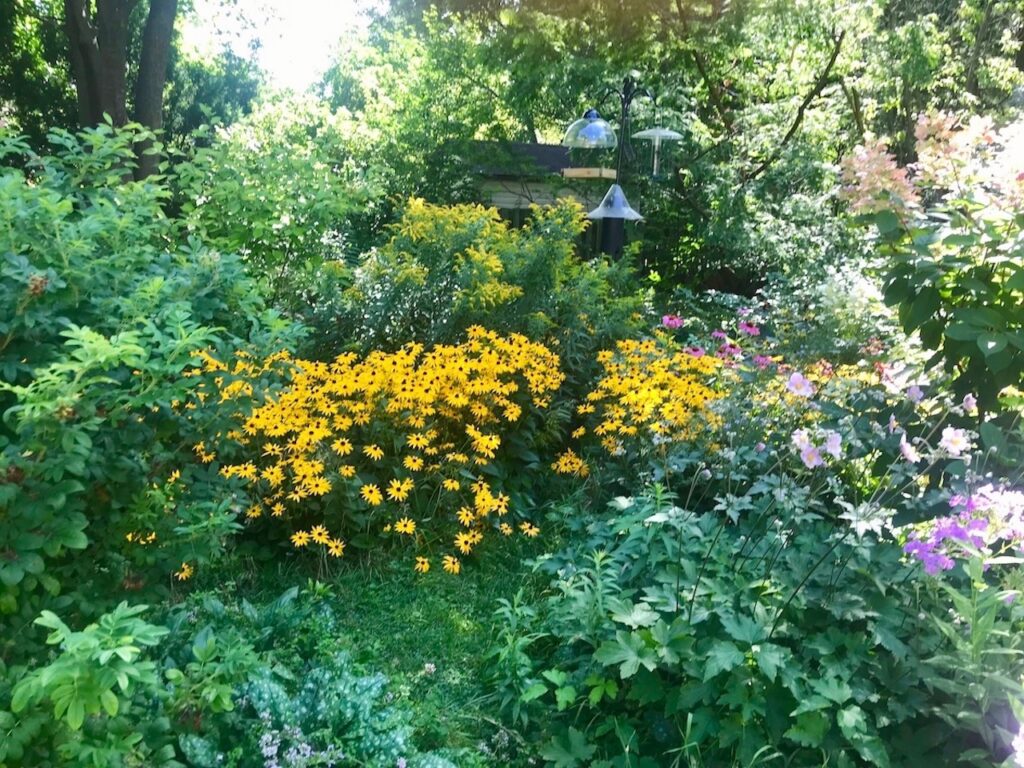
It was the middle of winter in 1998 when Jean Harwood-Gregson and her husband Richard Gregson bought their Baie d’Urfé home. Avid gardeners and bird watchers who had emigrated from England, they were eagerly awaiting the arrival of spring to discover if their property had a garden. As it turned out, says Richard, “it was a classic square of grass with trees around it.”
In those first three months, Jean kept scrutinizing the snow-covered property. “Our furniture was delayed on the high seas,” she says. “Richard had a work permit but it would be three years before I could work. In England, I had been used to seeing brown birds in our garden. But I was so taken with the colourful birds I saw here. By the time our furniture arrived, I was thinking about gardening. I saw a lot of local gardens here in the spring and was surprised to see many of the plants I’d known in England.”
The couple decided to create a landscape that would support the wildlife they were enjoying. As the garden has evolved in the past 24 years, it has been increasingly accommodating to birds and other fauna. Jean and Richard are both biologists. “The principle behind the garden has always been to make it attractive to wildlife,” Richard says.
Another principle that guides this couple in their garden design is that all volunteers—plants that pop up without being planted—are welcome here. As a result, the look is not one of cultivated control, but of colourful biodiversity that Mother Nature herself has created. Turf paths wend their way through borders that are lush with perennials, shrubs and trees. The garden is largely a no-mow zone. “I stopped mowing about five years ago,” Richard says. “If I could do it differently, I’d have started that 10 years ago. We’ve joined the no-mow movement.”
One of the first renovation projects that Jean and Richard undertook was an extension to the back of their house and the addition of a deck. From here, they observe visiting wildlife, and Richard photographs it.
There weren’t many plants when they began. “There was a bit of a border at the back—a bit of pulmonaria and saponaria, but we took it out,” Jean says. “Then I started adding things.” They built a pond that they can view from the deck. “We’d had ponds in England to provide water for the birds,” Jean says. “So we created one here.” It attracted raccoons, so with the help of friends, the Gregsons built a wall of stones around it.
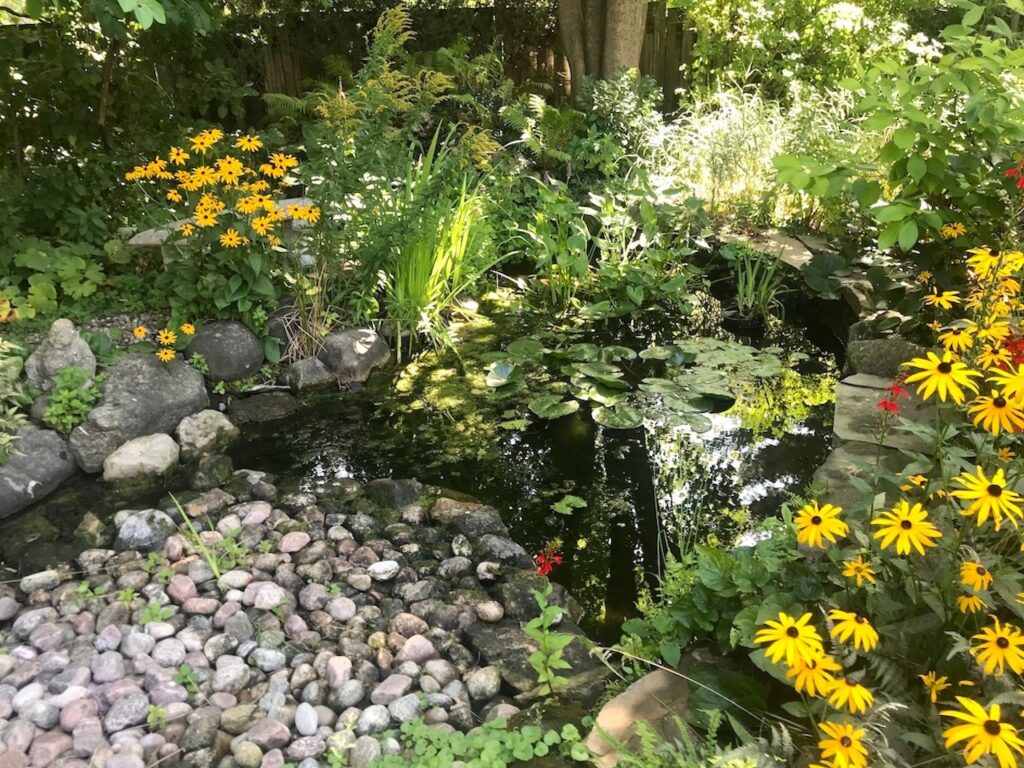
Richard takes on much of the heavy labour in the garden. He admits that he doesn’t particularly relish the tasks “but I like getting the results.” Jean is responsible for tending to their large collection of dahlias, which are challenging because the tubers must be lifted every autumn. She also grows lilies in pots. “My favourite job in the garden is dead-heading,” she says. “It doesn’t require a lot of work, but I get to walk around the garden and admire the fruits of my labour.”
She also admits to having favourites: “My precious lilies,” she says.
Richard says he likes the overall effect of the many plants together—the horticultural symphony that changes throughout the seasons.
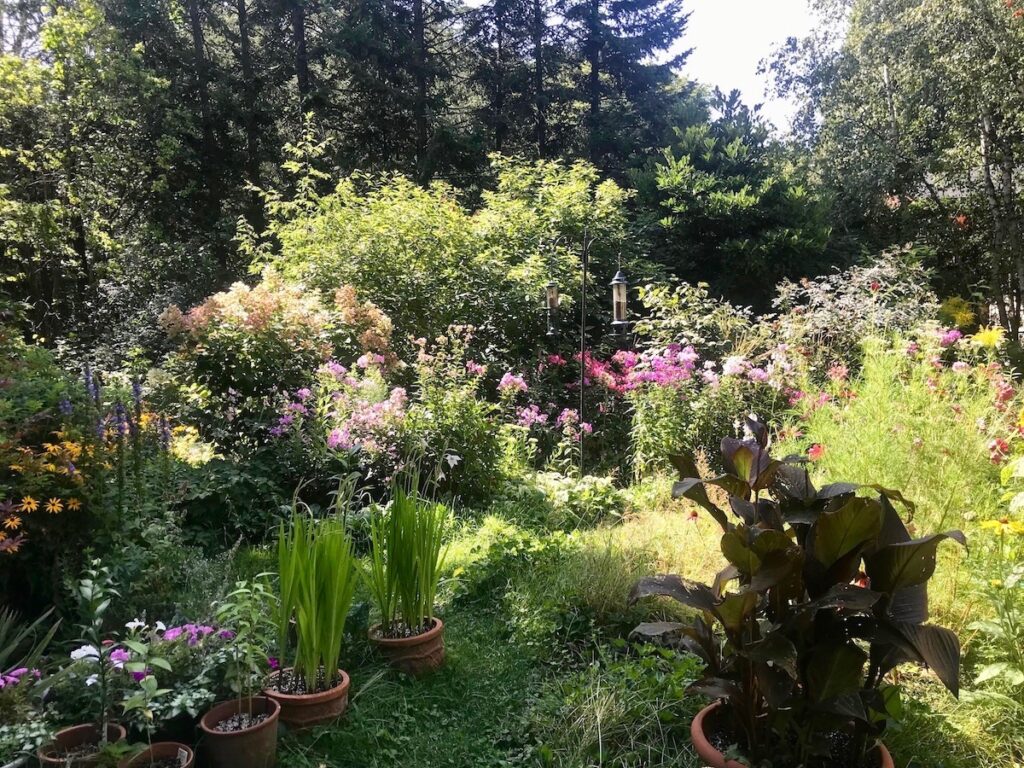
Last summer, the Nature Conservancy of Canada organized the Big Backyard BioBlitz, a call for “citizen science” in which Canadians were asked to enumerate the species they saw, creating an inventory of the country’s biodiversity. Participants were asked to “Grab your smartphone, tablet or camera, head outside to search for plants, animals and insects, snap a photo and share. From urban centres to remote campsites and anywhere in between, participate when you can, where you can, on your own or bring the whole family.”
The Gregsons participated in the BioBlitz in their own yard and nearby area. “We enumerated, overall, 216 species,” Richard says. “Insects, plants, birds. I photographed them. Our total of 216 species was the sixth highest out of almost 2,000 entries in all of Canada.” He says wildlife is attracted to the garden “because of what we grow. Of course, we see them because we’re actively looking for wildlife.”
Says Jean: “We both grew up observing nature and we are trained to observe it in detail.”
Their plan to share their adopted home with flora and fauna is working. All the little creatures feel very welcome here.
